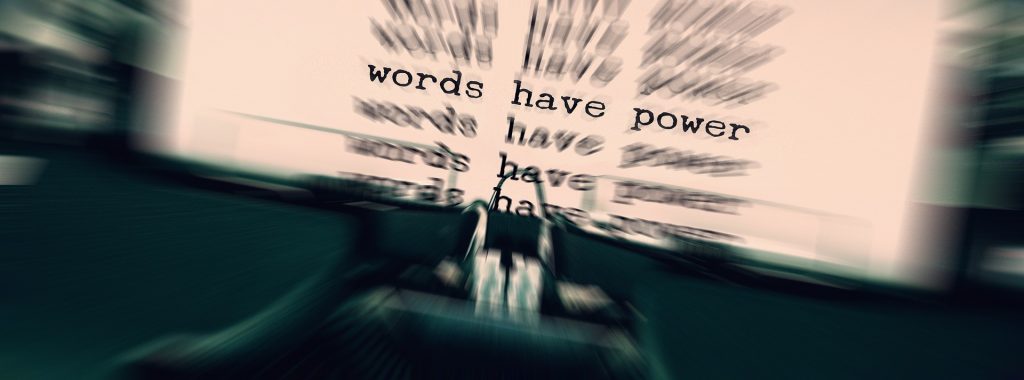If you want your blog post to show up in search engines, you need to make sure it’s structured in a way that’s easy to read and logical. A jumble of words and thoughts that makes your target audience stop reading and look for something else, won’t help you grow your business.
Planning your blog post structure before you start is an easy way to make sure you have a clear beginning, middle, and end. This doesn’t need to be detailed, but getting into the habit of planning out your writing process before you start is a good idea to help you write a post that’s going to rank well.
Planning and headline
Start at the beginning. List the main points you want to cover and where they will go in the post. Starting with your headline is one of the most effective ways of making sure your post is logical and makes sense. It needs to be something that tells the reader exactly what the main topic of the post is and what it’s about. Including power words such as “discover”, “memorable”, “beautiful”, “challenge” or “easy” are good ways of catching a reader’s attention. If you’re writing a list post, headlines such as “Five of the best…..” or ” Ten of the best ways to ……..” “How to do xyz in three easy steps” work well. It’s very clear from headlines like that, what the post is going to be about.
If you then share the headline on social media, for example, your audience will know instantly whether the type of article you’ve written is going to be something they want to read. If you’re struggling to come up with a good headline, there are free resources you can use to give you a helping hand. Title Generator, for example, generates headlines based on your keywords.

Hook
A good blog post hooks your reader, piquing their interest and making them want to read on. So, when you’re planning your post, think about what your hook is going to be. What is it that will make your reader want to read on? Is your hook an anecdote, a news item or is it facts and figures?
An example of a good hook if you’re writing about reusable fabric wipes, could be a news article about a fatberg growing in the sewers of London. The news report explains how the fatberg has been created by single-use wet wipes being flushed down the loo. They don’t disintegrate but stick together and create a huge mound, blocking the sewers.
Hopefully, the hook piques your audience’s interest and makes them want to read more. A hook doesn’t have to be about your business to get your reader’s attention. Just writing about your business can be boring. And it doesn’t let potential customers get to know you which is a great way of building a relationship with them.
Middle
Next is the main body of your post which should explain to your reader why you’re telling them this piece of information. Why is it relevant to them?
Going back to the example of the fatberg, once you’ve talked about what it is and what’s caused it, you need to explain why you’re telling your reader about it. In this example, you’re telling them about it because single-use plastics are devastating our environment, and the fatberg is an example of how the problem is growing. Because it’s in the sewer, we can’t see the devastation it’s causing until our drains start to overflow. You could go into quite a lot of detail in this section, depending on what it is you’re writing about.
Ending
Once you’ve explained to your reader why you’re telling them about the fatberg, give them a solution. The solution in this example is showing how easy it is to switch from using single-use plastics, to reusable fabric wipes like the ones you sell.
Explain the benefits to them, and the environment, of making the easy switch. You could go into detail about your wipes, the sizes you sell, what they can be used for, and how to clean them. Explain how taking the first step to being more environmentally aware, can have a huge impact.
A good way of thinking about your structure, regardless of the topic, is:
- explain what you’re going to tell people,
- tell them,
- and then explain what you’ve told them.

Length
For a blog to be easily found by search engines such as Google, it needs to be at least 600 words. Posts between 600-1000 words are usually best. But don’t be tempted to pad out a post just to make it longer and therefore more searchable. That will turn your readers away.
If your post needs to be long, using images to break up the words is also a great way of keeping your reader interested. Add in headings too which will also help search engines find your post and make longer posts more readable. If it’s very long, you could add a content list at the start so readers can easily see what’s included and skip to the bit they want if needs be.
Tone
The best way of connecting with people in a blog post is to use an informal, conversational tone. But make sure your spelling is spot on. Most web platforms have spelling tools and plugins you can use so don’t worry if you’re spelling isn’t brilliant. Make sure you proofread and check the wrong word or version of a word hasn’t been used.
Short is best
Short sentences and paragraphs work best as they’re easier to read. Again, there are lots of plugins and tools you can use to help with this. For example, the WordPress plugin Yoast gives you a readability score. That tells you how easy your post is to read and will flag up if your sentences are too long.
Think about how your brain takes in information. Your mind can start to wander off if you’re reading a long sentence. And longer sentences can be harder to understand so you lose the point of what’s being said. Similarly short paragraphs that are to the point are better than long, rambling ones. Try and stick to one point per paragraph.
When you write a blog post for your business website, the aim is to connect with potential new customers and show them you and your business can be trusted. Using a good structure is a great way of doing this. The more you write and the more confident you are, the easier it becomes to write this way.
A well-structured post containing quality content will help you show up in more search results. If you can, include external links to websites you trust and are relevant to what you’re writing about.

How I can help
Blog writing doesn’t come naturally to everyone. If you’d like to learn how to write brilliant posts yourself, my Simple SEO content masterclass will do just that. It’s £20 and will show you how to write posts that are engaging and get picked up by search engines and shown to the people you want to do business with.
If you want to look at structure in a bit more detail, my Blogging for Business masterclass is what you need. It takes you through the different stages of writing a post to help you learn how to write brilliant posts that help your business grow.
I know that not everyone enjoys writing and some people just don’t have the time. If that’s you, I have a range of blog packages that will give you weekly, fortnightly, or monthly blog posts that help connect you with potential new customers.
And finally, if you’d like regular writing and SEO tips, subscribe to my newsletter, Simple SEO. If you subscribe by the end of February, you’ll get a free download “3 things you can do today to improve your SEO” and as a bonus, I’ll send you a free video sharing some other tips to help you get your website seen by the people you want to do business with.


0 Comments